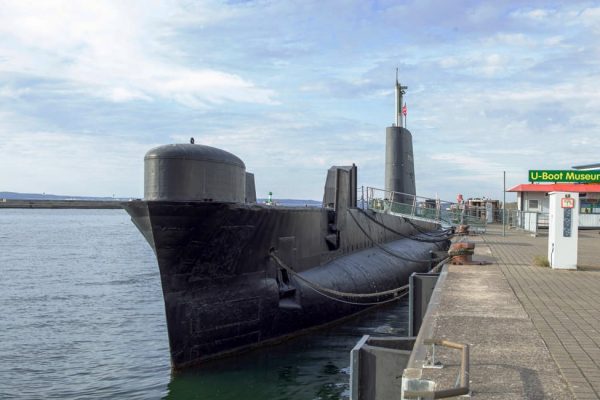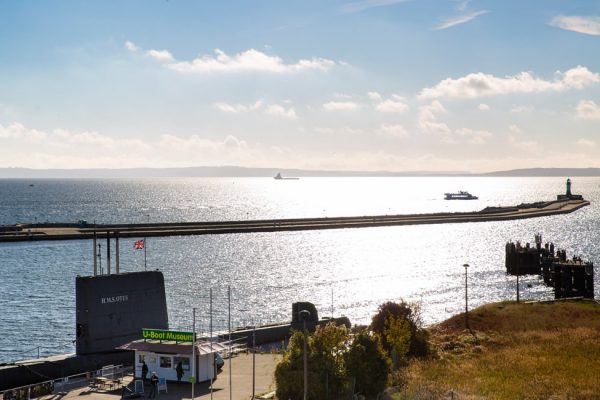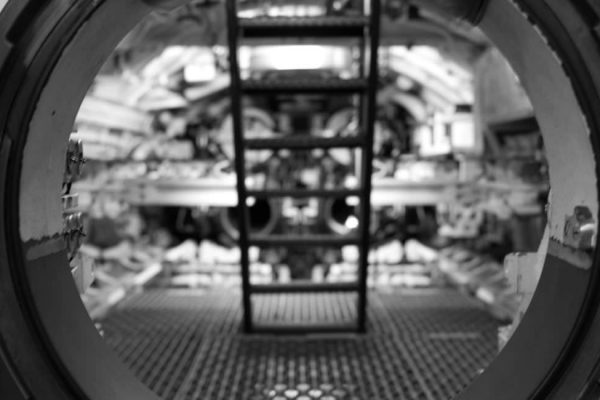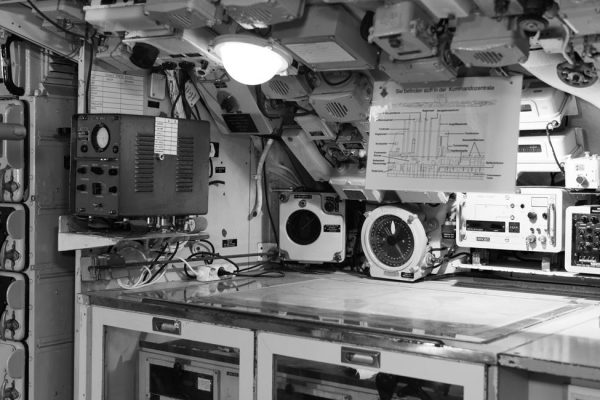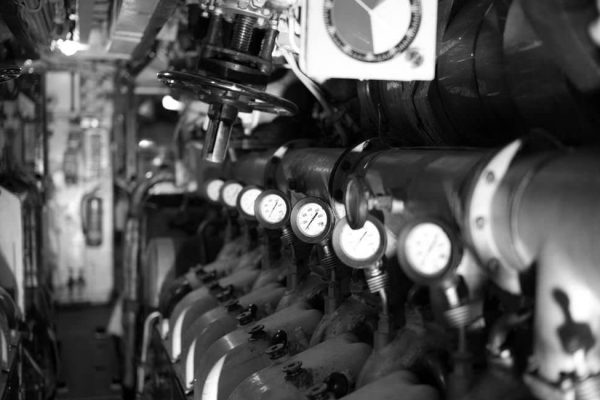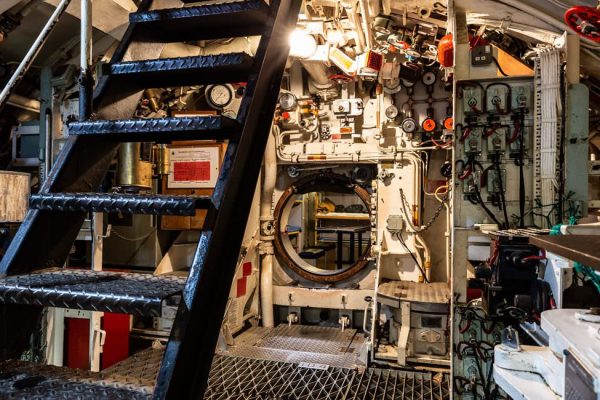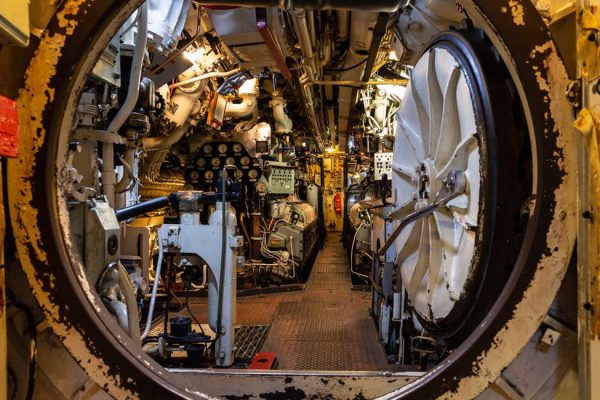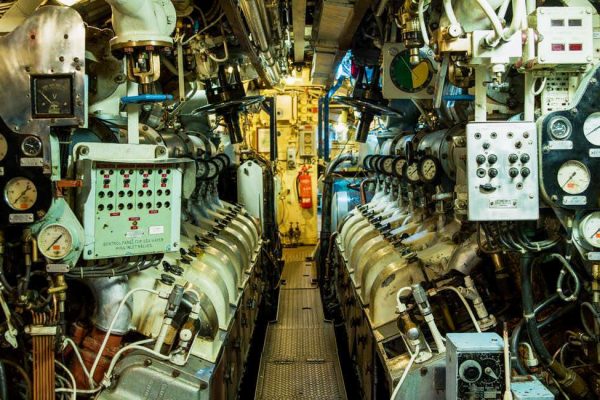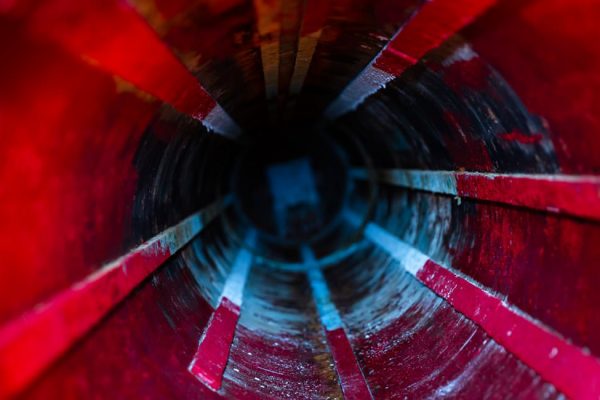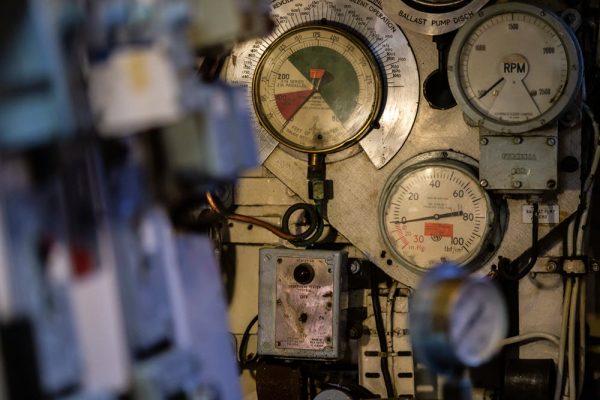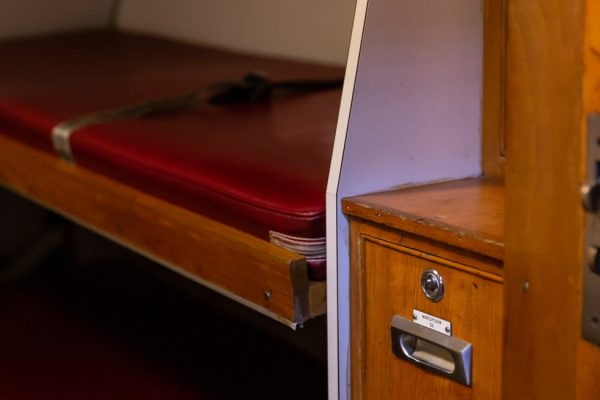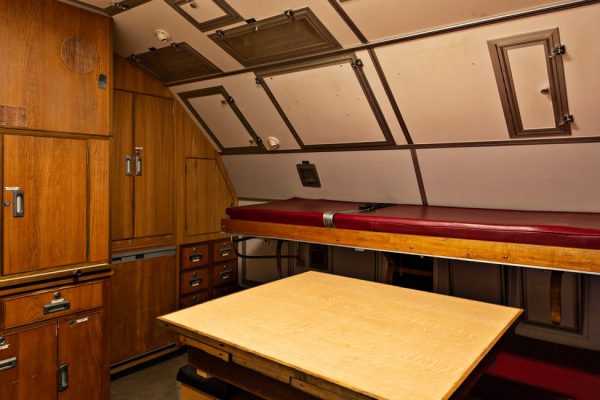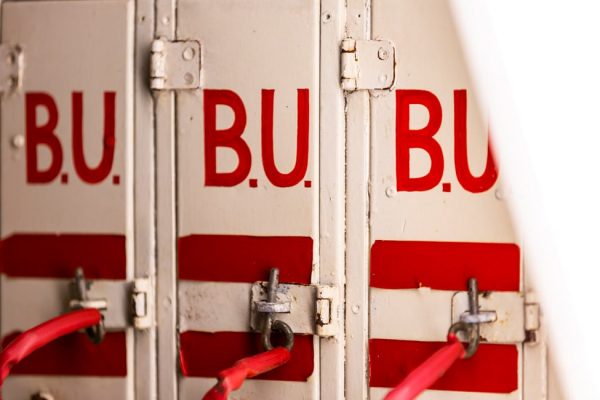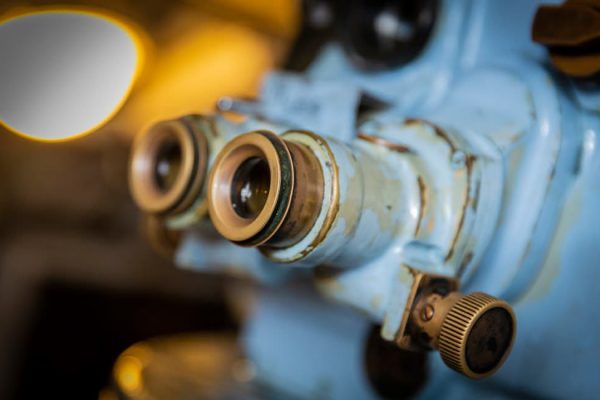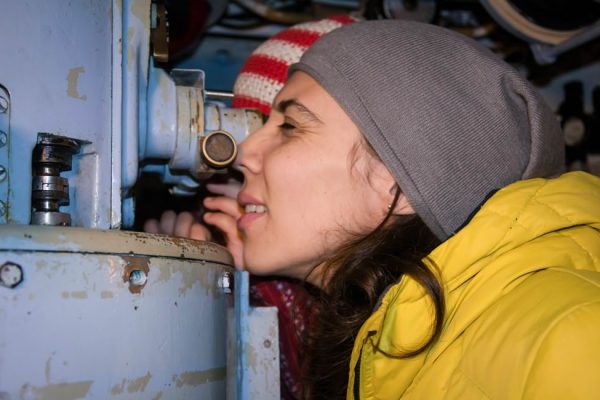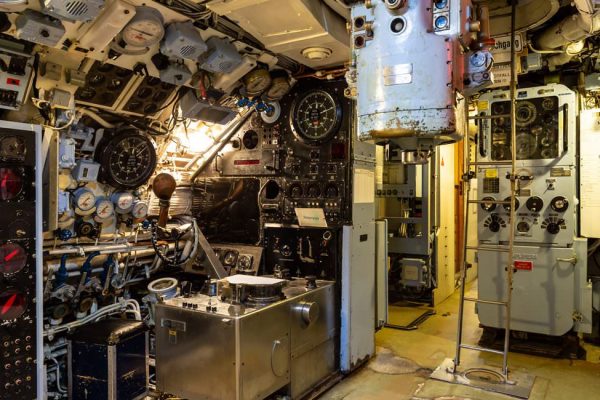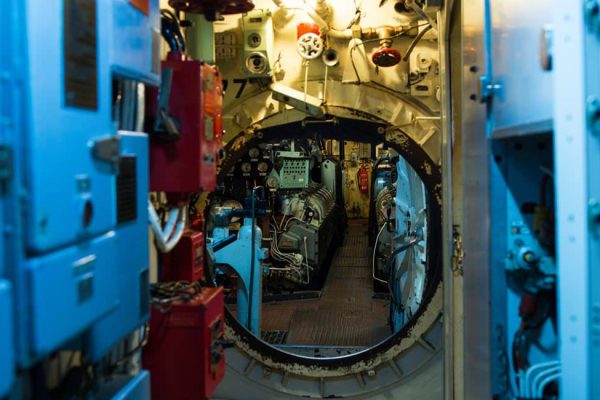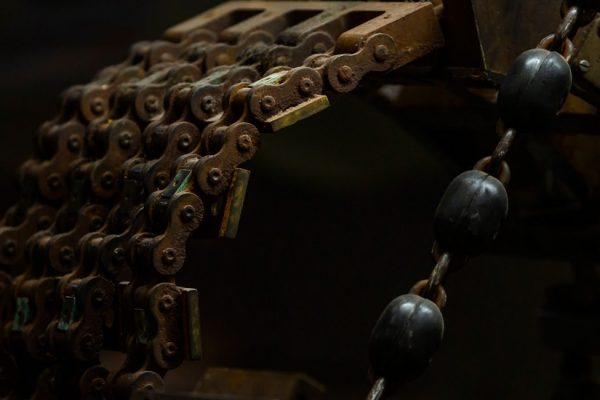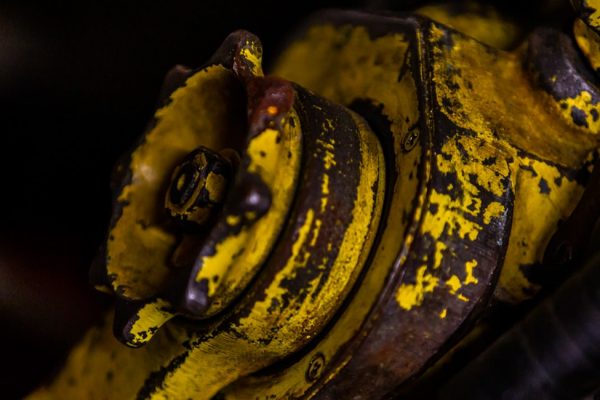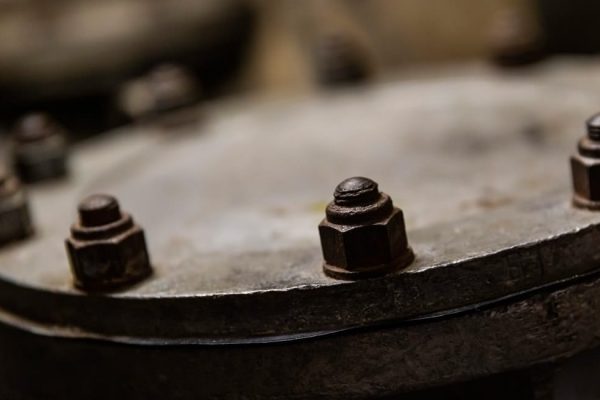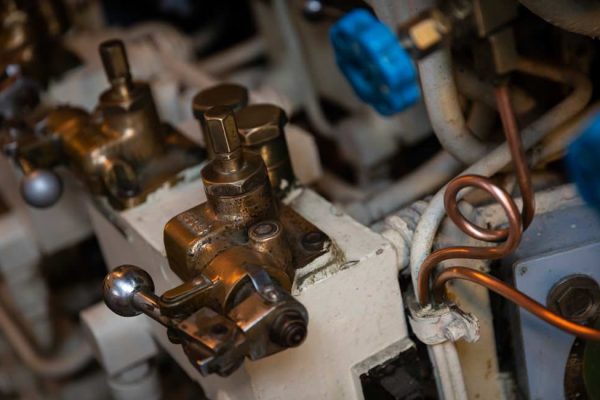Immerse yourself in another world and explore the unique atmosphere of a submarine.

Opening hours
January
10 a.m. – 4 p.m.
1. calendar week: open daily, from 2. week: Sat/Sun
Feb – April
10 a.m. – 4 p.m.
open daily
May – Oct
10 a.m. – 6 p.m.
open daily
Nov- Dec
10 a.m. – 4 p.m.
Dec.: open Sat./Sun., closed on Dec. 24th, from 25.12. open daily
last entry: 30 minutes before closing
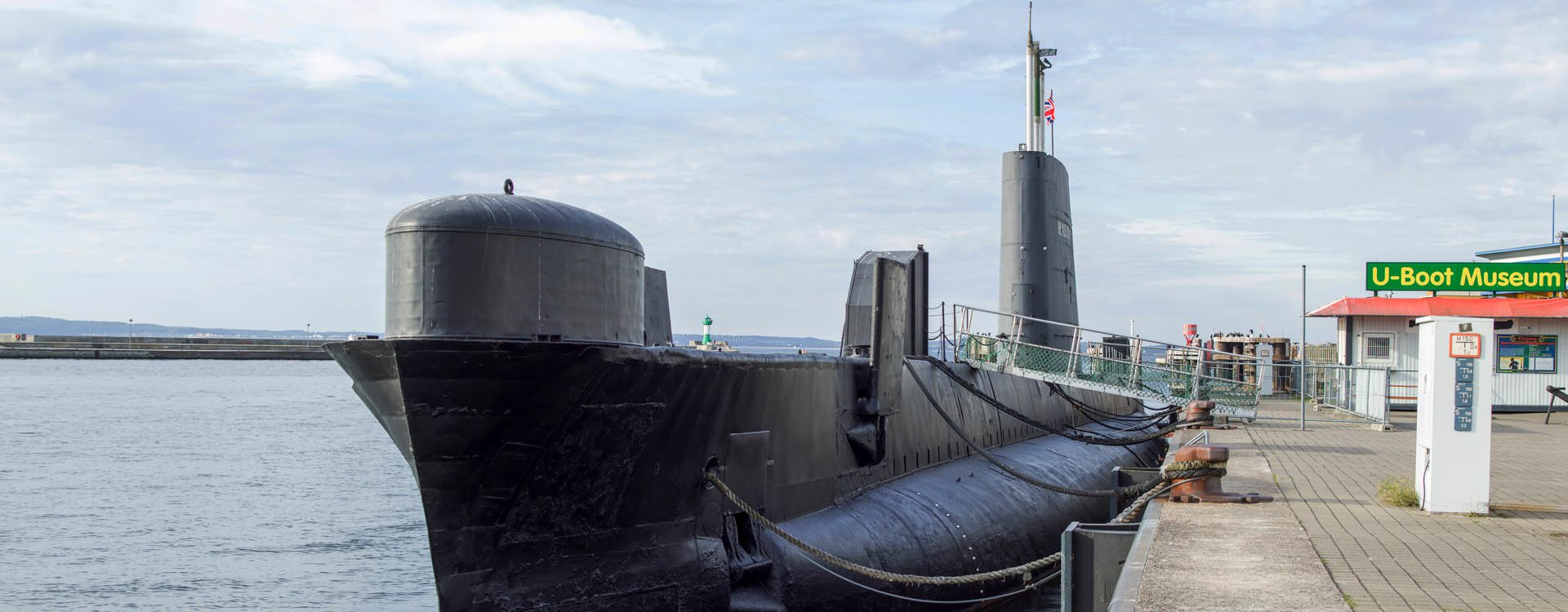
Ticket prices
Regular prices
| children (4-13 years old) | 5,50 € |
| teenager (14-17 years old) | 6,50 € |
| adults | 9,50 € |
| family ticket(2 adults + children) | 22,00 € |
| photo / video permission | 1,00 € |
Group prices
| children (4-13 years old) | 5,00 € |
| teenager (14-17 years old) | 6,00 € |
| adults | 7,50 € |
only cash payment

Submarine Legend:
The decommissioned British submarine “HMS Otus – S 18” of the Oberon Class is now moored at Sassnitz city harbour. It is one of the largest non-nuclear submarines. When submerged it displaces 2,410 t water. HMS Otus was commissioned in 1963. It served for 28 years.
It was opened to the public as a museum boat in Sassnitz in 2002. Today, it houses an extensive exhibition about life aboard a submarine. Authentic, impressive and unspoilt: an evocative story all about the secret world of submarines awaits you in the 28 mm thick pressure hull.
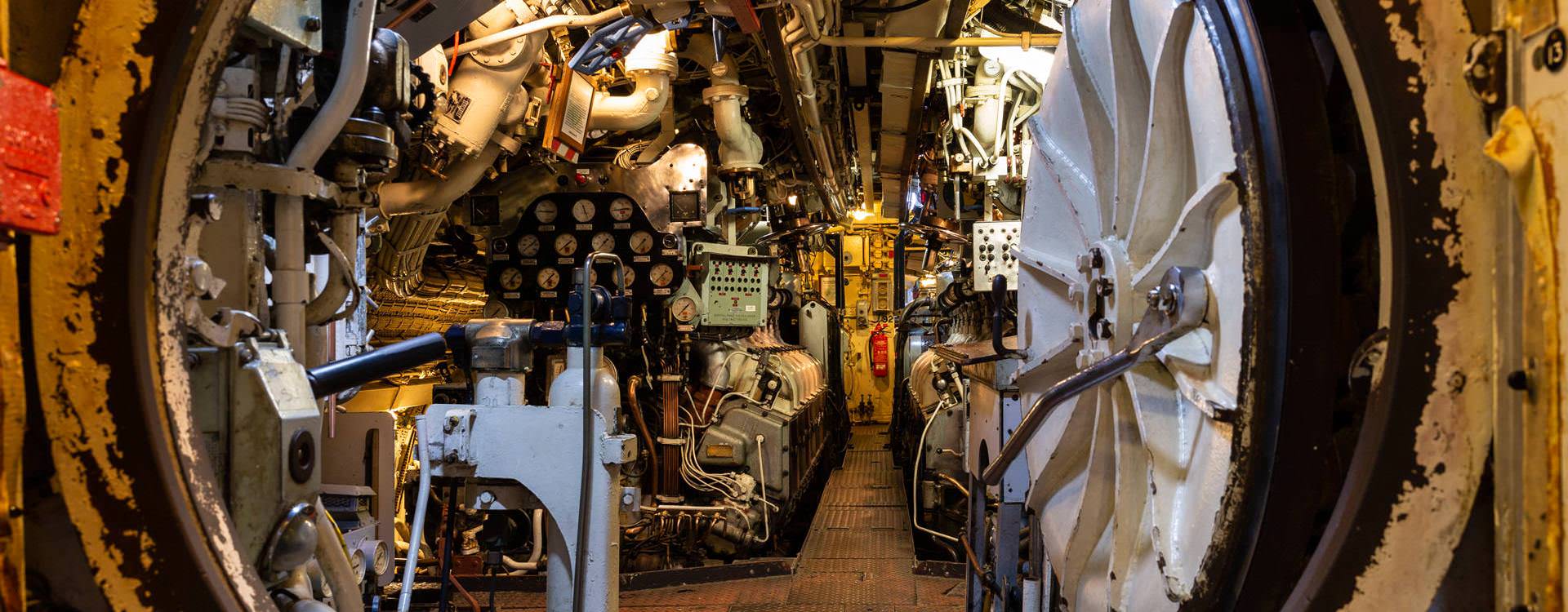
Dive:
The exhibition begins in the imposing torpedo room in the foreship. 21 Tigerfish torpedoes with a range of 5,939 NM = 11,000 m and a speed of 40 kn = 74 km/h were stored there ready to be discharged.
The boat is divided into 5 sections by sealable bulkheads. The narrow berths and the mess table in the team room illustrate how bustling it must have been in such a confined space. The crew comprised 68 experienced sailors who had to rely on each other and trusted each other blindly.

People:
Each crew member had their own berth but had to share a small wooden cupboard with several other sailors for their private wares. Each sailor had a maximum of 3 l of water per day, mainly used for eating, drinking and washing.
The crew was subjected to considerable physical and mental strains. Shifts of between 6 and 12 hours, dives of up to 300 m and deployments of several weeks at a time posed very special challenges.

Equipment:
Two thirds of the boat are dedicated to machinery, the operations room, and the propulsion and dive systems. Original gauges and transport and communications technology exhibits in a historical atmosphere will leave everyone aghast and mystified.
Visitors can take a look at Sassnitz harbour themselves through the attack periscope, once operated by the commander, and the naval surveillance periscope.
Technical specifications of HMS Otus – Royal Navy Oberon-class submarine
Ship construction
| Origin | Great Britain |
| Crew | 68 |
| Commissioning | 1963 |
| Length | 90 m |
| Beam | 8,10 m |
| Draught | 5,50 m |
| Water displacement (at surface) | 2,030 t |
| Water displacement (submerged) | 2,410 t |
| Dive depth | up to 300 m |
| Range above water | max 9,000NM at 10 kn |
| Speed (at surface) | 11 kn |
| Speed (submerged) | 17 kn |
Propulsion, energy system
| 2 diesel generators | 1,840 bhp each |
| 2 electric motors | 3,000 bhp each |
| Battery cells | 448 units provide 880 volts |
Armament
| Torpedo – MK-24 Tigerfish as of 1974 | 21 units |
| Length | 6,7 m |
| Range | 11,000 m |
| Speed | 40 kn = 74,08 km/h |
| Torpedo calibre | 533 mm |
Electronics
Active and passive scanning sonar and radar, radio direction finder, fire control system, shortwaver transmitter, hydro-acoustic system
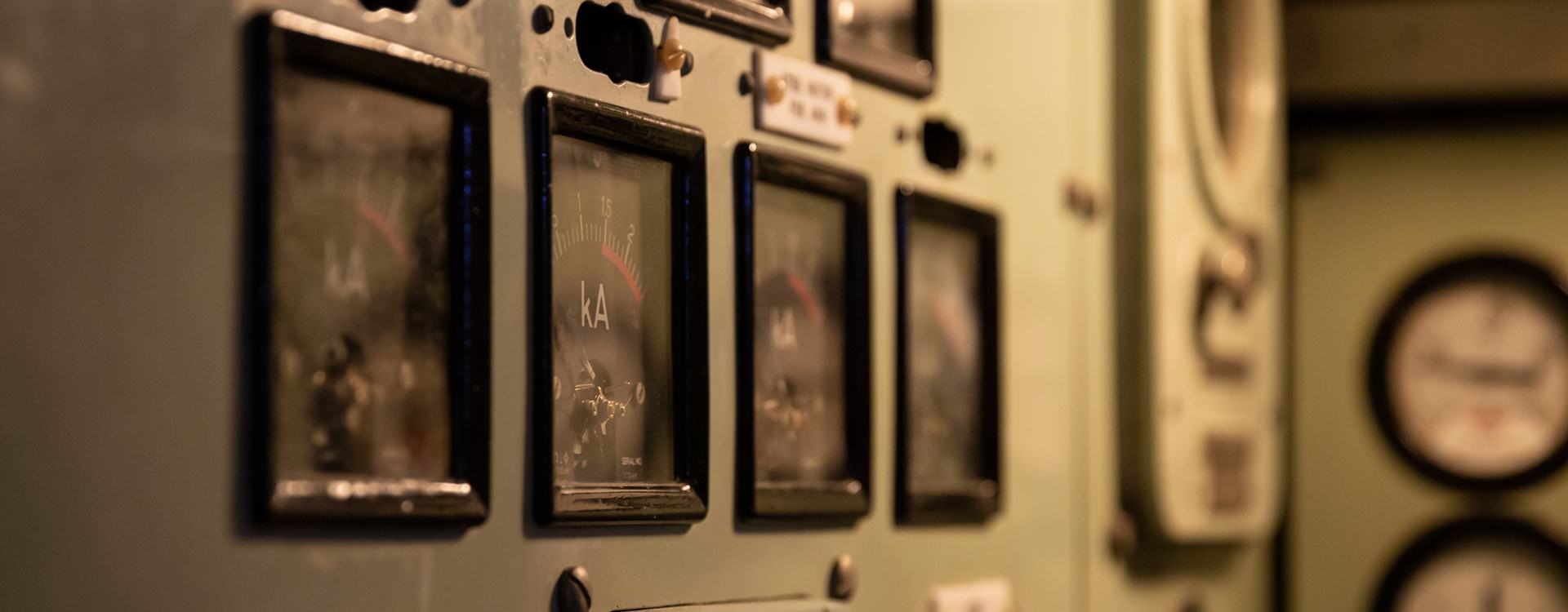
Engine:
Underwater, the boat was propelled by 2 electric motors each with 3,000 bhp. The electric motors were fed by 448 batteries, each weighing 500 kg (totalling 224 t). That is one reason the Oberon Class submarines were called “silent hunters”.
At surface, 2 diesel engines with 1,840 bhp and 16 cylinders provided a speed of 10 knots. That allowed for an action radius of 9,000 NM = 16,668 km. At the same time, 2 generators recharged the batteries.


